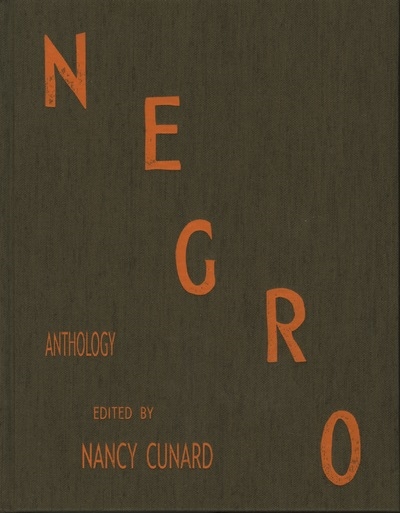par Cunard, Nancy
Nouvelles éditions Place
2018 -
-
Disponible - 973-45 CUN
Niveau 2 - Histoire
Résumé : Tirée à 1000 exemplaires en 1934 et très peu distribuée, jamais rééditée dans son intégralité et dans son intégrité, la Negro, véritable collage-documentaire mêle culture populaire, sociologie, politique, histoire, histoire de l’art. La Negro rassemble archives, rapports, extraits de presse et d’ouvrages, photographies, statistiques, discours politiques, proverbes, tracts, statistiques, poèmes…qui expriment la réalité des conditions noires dans les Amériques, en Afrique et en Europe dans les années trente (...). Les cent cinquante-cinq auteurs de la Negro Anthology sont noirs, blancs, femmes, hommes, engagés ou pas, sportifs, journalistes, anthropologues, historiens, écrivains, poètes, musiciens, chanteurs, universitaires et militants. Certains d’entre eux sont colonisés, discriminés, ségrégués. Negro Anthology est l’oeuvre poético-politique d’une femme. Poète, collectionneuse d’art non occidental, modèle, éditrice et journaliste, Nancy Cunard incarne la modernité des années 20 et réalise un pont unique entre les avant-gardes anglo-saxonne et française. Les textes des francophones (Crevel, Peret…) sont traduits par Beckett.

 Les bibliothèques de la ville de Paris
Les bibliothèques de la ville de Paris
 Les bibliothèques universitaires
Les bibliothèques universitaires
 La BnF
La BnF
 L'encyclopédie Wikipédia
L'encyclopédie Wikipédia
 L'Encyclopædia Universalis
L'Encyclopædia Universalis
 La bibliothèque du film
La bibliothèque du film
 La médiathèque de la Philharmonie de Paris
La médiathèque de la Philharmonie de Paris




![Soul of a nation : art in the age of Black power : [exhibition, Tate Modern, 12 July-22 October 2017, Bentonville (Arkansas), Crystal Bridges Museum of American Art, 3 February-23 April 2018, New York, Brooklyn Museum, 7 September 2018-3 February 2019]](/imported_images/livre/couverture/9781849764636.jpg)





![Grief and grievance : art and mourning in America : [exhibition, New York, New Museum, October 20, 2020 - January 24, 2021]](/imported_images/livre/couverture/978-1-83866-129-8.jpg)


